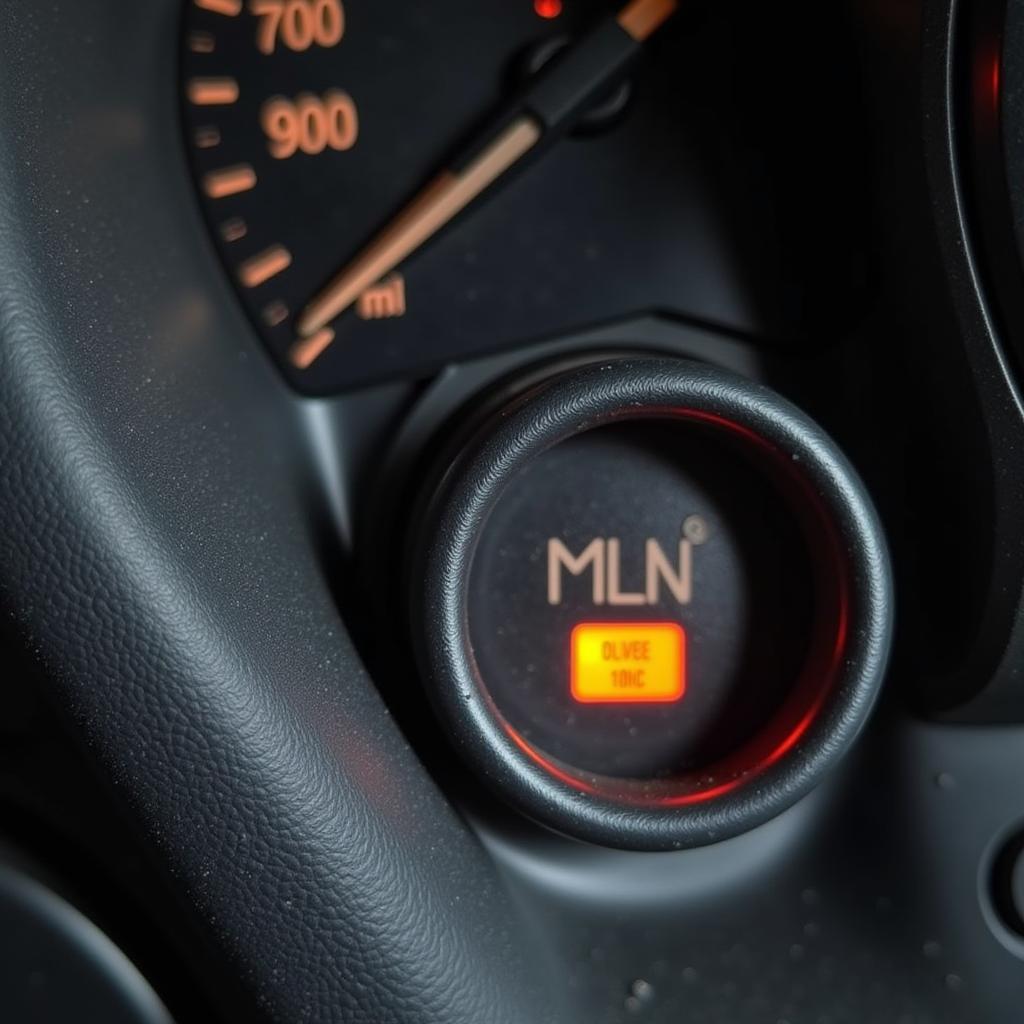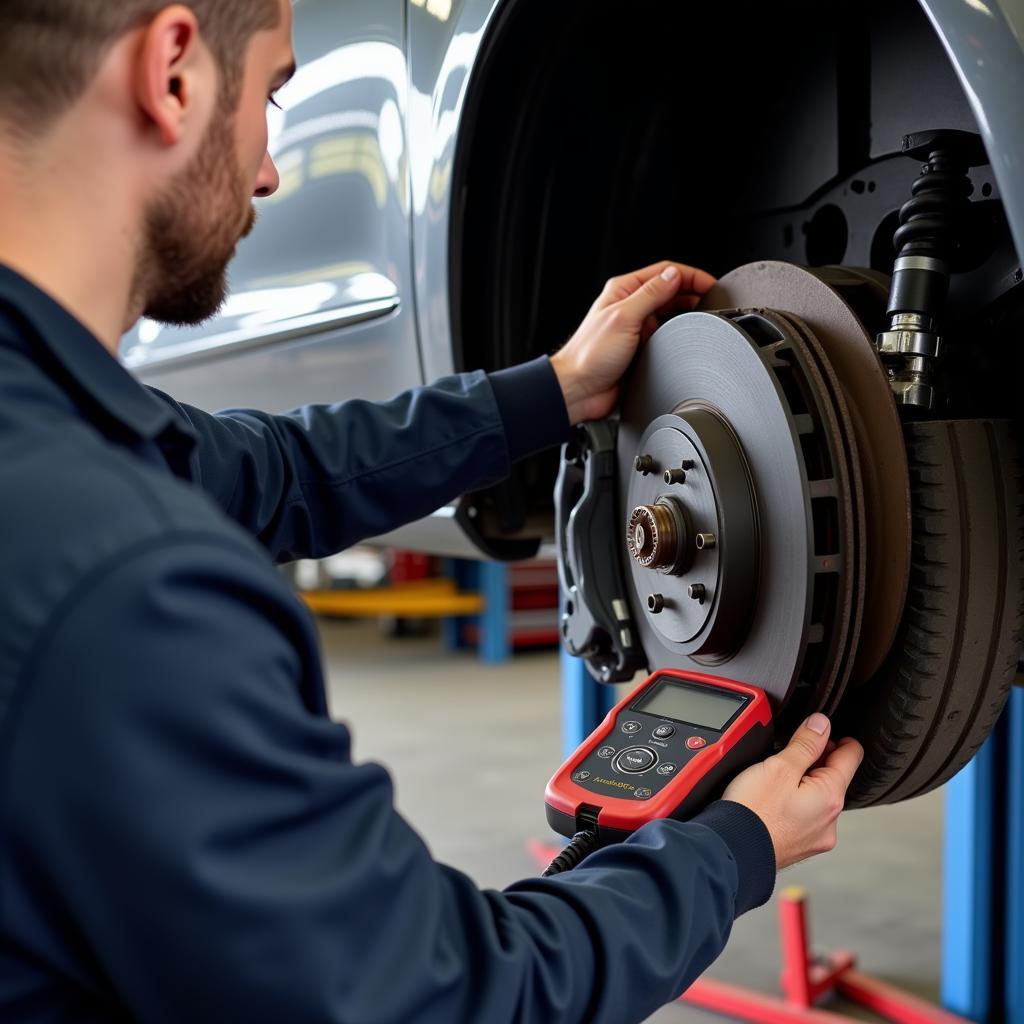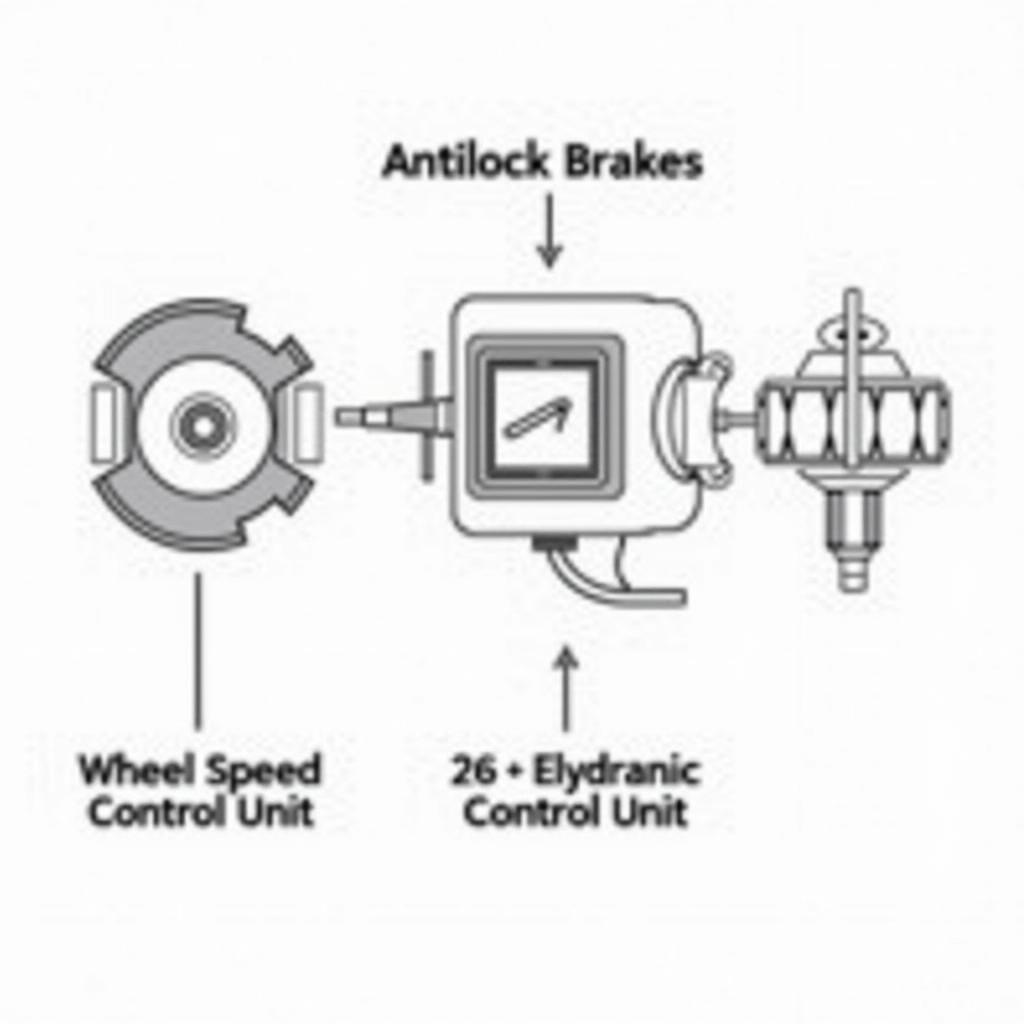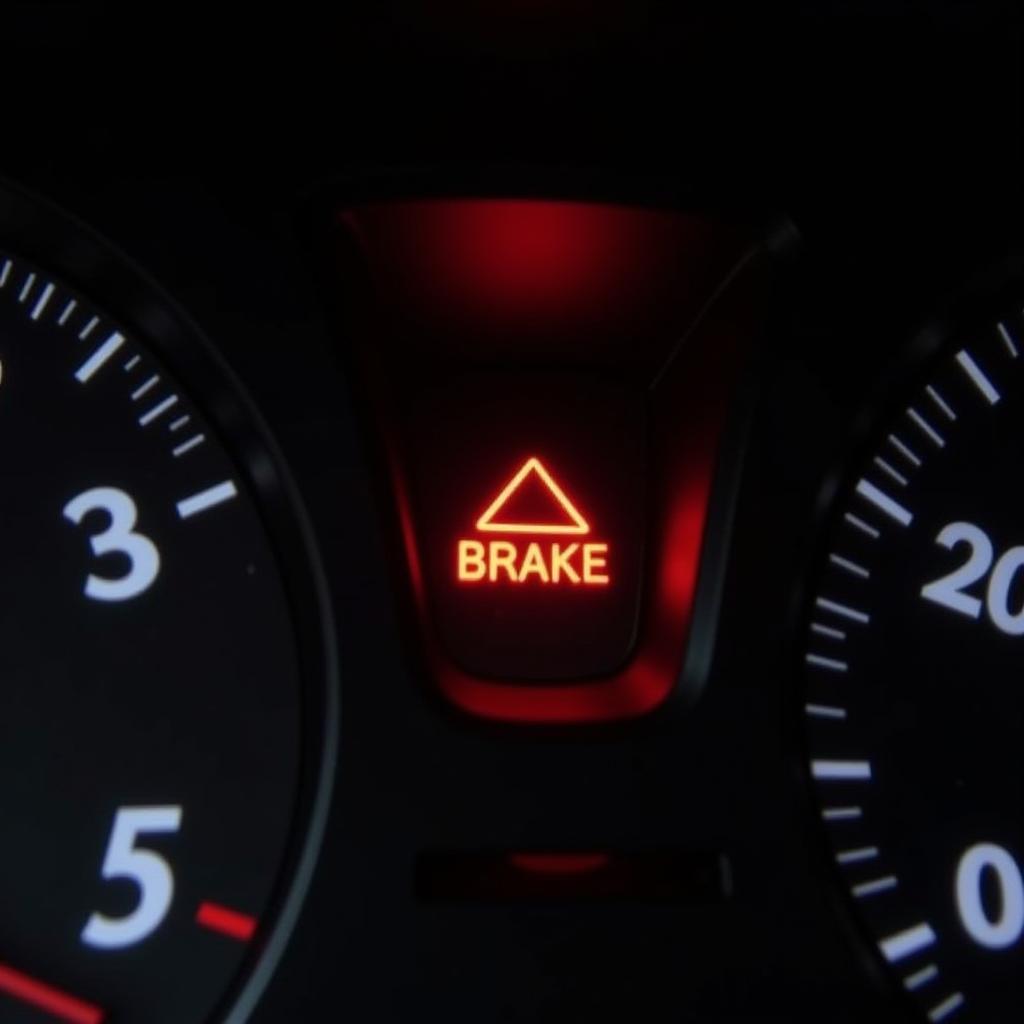If your 2008 Ford F150’s brake warning light stubbornly refuses to switch off, it’s a clear signal that something isn’t quite right with your braking system. Ignoring this illuminated warning is a risky move, potentially putting your safety and the well-being of others on the line. This article delves into the common culprits behind a persistent brake warning light on a 2008 Ford F150 and provides you with the knowledge to address this issue head-on.
Understanding Your F150’s Brake Warning Light
The brake warning light on your dashboard is like your vehicle’s way of saying, “Hey, pay attention to my brakes!” It’s designed to alert you to potential issues within the braking system. When you see that light, it doesn’t automatically mean a catastrophic brake failure is imminent, but it does warrant prompt investigation.
Common Causes of a Staying-On Brake Light
Several culprits could be responsible for that persistent glow on your dashboard:
1. Low Brake Fluid
This is the most frequent offender. Brake fluid is the lifeblood of your braking system, responsible for transmitting the force you apply to the brake pedal to the brake calipers, which then squeeze the brake pads against the rotors, bringing your truck to a halt. If there’s a leak in the system or your brake pads are excessively worn, the brake fluid level drops, triggering the warning light.
 Low Brake Fluid Reservoir
Low Brake Fluid Reservoir
2. Worn Brake Pads
Brake pads are designed to wear down over time. It’s the nature of their job. Most vehicles have a built-in wear indicator – a small metal tab that contacts the rotor and emits a high-pitched squealing sound when the pads are nearing their end. However, this indicator isn’t foolproof, and sometimes, the brake warning light is the first sign of severely worn pads.
 Worn Brake Pads Comparison
Worn Brake Pads Comparison
3. Faulty Brake Light Switch
The brake light switch, usually located above the brake pedal arm, is responsible for activating your brake lights when you press the pedal. If this switch malfunctions, it can disrupt the brake warning light circuit, causing it to stay on even if the brake system itself is functioning correctly.
4. ABS Issue
Your 2008 Ford F150 is equipped with an Anti-lock Braking System (ABS). If the ABS module detects a problem, it can trigger the brake warning light. This could indicate a malfunctioning wheel speed sensor, a problem with the ABS module itself, or an issue with the wiring harness.
5. Parking Brake Engaged
This might seem obvious, but sometimes the simplest explanations are overlooked. Make absolutely sure your parking brake is fully released. Even a slightly engaged parking brake can illuminate the brake warning light.
Troubleshooting Your Brake Warning Light
Before you begin: Safety is paramount. If you’re uncomfortable working on your vehicle, it’s always best to seek the expertise of a qualified mechanic.
1. Check the Obvious:
- Parking Brake: Ensure it’s fully disengaged.
- Brake Fluid Level: Inspect the brake fluid reservoir. If it’s low, add the correct DOT 3 or DOT 4 brake fluid (check your owner’s manual) to the “MAX” line.
2. Inspect Brake Pads:
- If you’re mechanically inclined, you can remove a wheel to visually inspect the brake pads. If they’re worn thin or you see the wear indicator making contact, it’s time for a replacement.
3. Seek Professional Help:
If the brake warning light remains illuminated after checking the brake fluid and parking brake, it’s time to call in the pros. A qualified mechanic will have the diagnostic tools and expertise to pinpoint the root cause of the problem.
 Mechanic Diagnosing Brake Issue
Mechanic Diagnosing Brake Issue
Don’t Ignore the Warning
A glowing brake warning light is never something to ignore. It’s always better to err on the side of caution and address the issue promptly. Remember, a well-maintained braking system is essential for your safety and the safety of everyone else on the road.


